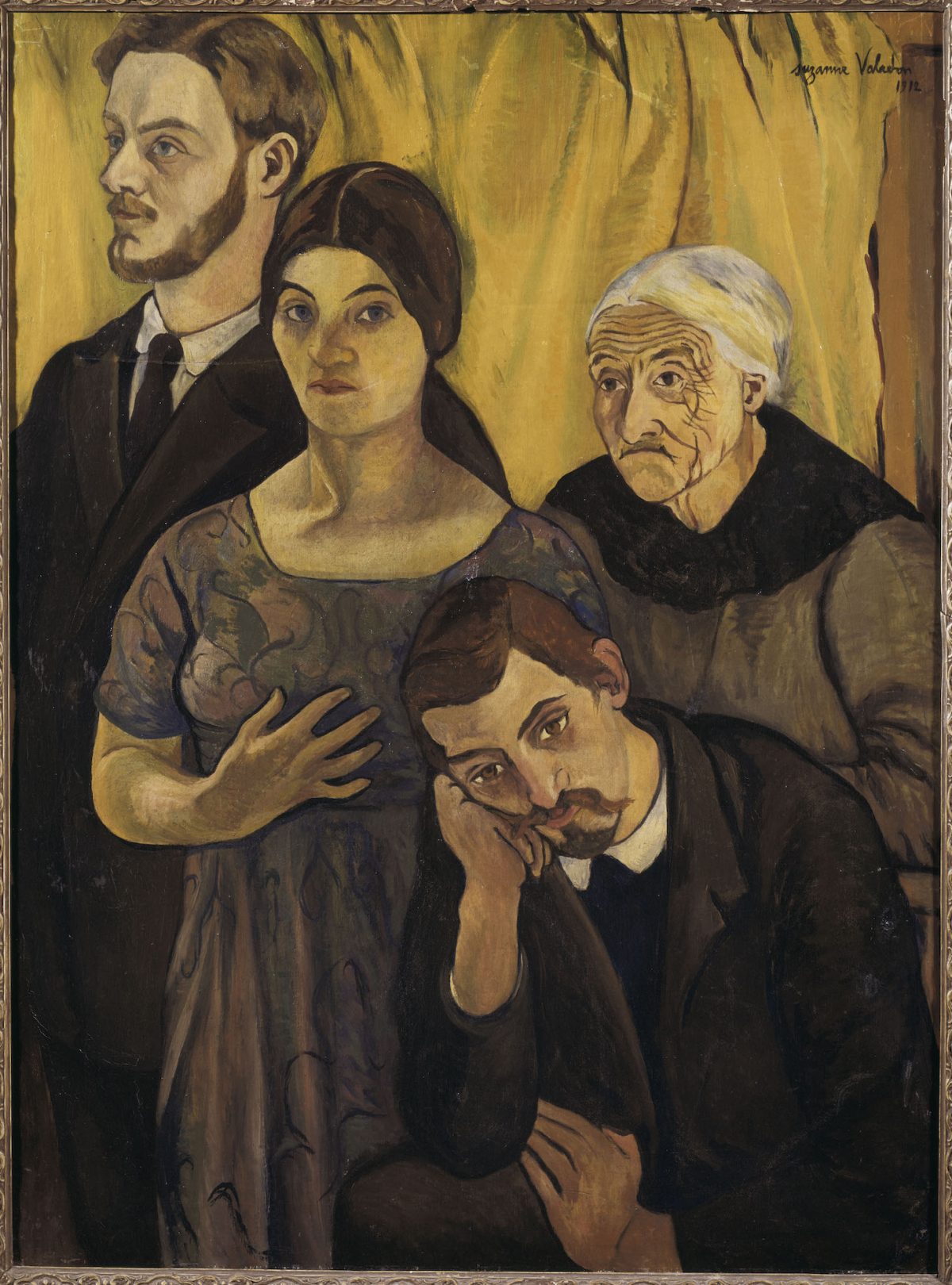
PHILADELPHIA — While Suzanne Valadon was commercially successful as an artist in her lifetime and saw her work become part of national collections in France, those of us outside her home country are probably most familiar with her as the woman in a swirling pink dress and wide-brimmed orange hat in Renoir’s “Dance at Bougival” (1883). Or maybe we know her as Toulouse-Lautrec’s “Young Woman at a Table” (1887), or from any number of paintings by Degas.
The Barnes Foundation in Philadelphia is recognizing Valadon over 80 years after her death with what it is billed as her first major United States exhibition, Suzanne Valadon: Model, Painter, Rebel, on view through January 2022, before it travels to the Ny Carlsberg Glyptotek in Copenhagen.

Valadon’s story begins in poverty. She was Marie-Clémentine until Lautrec, her lover, called her Suzanna, and she morphed into Suzanne. Her single mother toiled as a laundress and there was little time for schooling for Marie, who began working at age 11. At 15 she realized she could do well as a model.
Just over five feet tall, Valadon became a force on the canvas’s stage, inhabiting the roles she played and sustaining difficult poses for long stretches of time, a skill she may have honed while purportedly working at the circus. In “The Kiss of the Siren” by Gustav Wertheimer (1882) — a painting almost as large as a movie screen and certainly as cinematic — we see her voluptuous form emerge from a stormy sea, luring an impassioned sailor from his vessel in a moment of unbridled passion. Curator Nancy Ireson compares Valadon’s modeling to performance art.

All the while she was working with artists, Valadon was watching and learning. She had begun drawing at age nine, but had no formal art education. From modeling she learned how bodies move. Lautrec encouraged her. Degas recognized her genius and became a mentor and patron, who introduced her to printmaking.
An unexpected pregnancy did not interfere with Valadon’s art career. She used both her mother and son, the painter Maurice Utrillo, born in 1883, as models. In 1894, she exhibited at the Salon de la Société Nationale des Beaux-Arts in Paris, the first self-taught woman artist to do so. Two years later Valadon married affluent businessman Paul Mousis, enabling her to have household staff who could do double duty as models.

The identity of Utrillo’s biological father remains unknown. Art historians widely believe the artist Miguel Utrillo, a friend of Valadon’s, offered his name to be used, although he was never really a father figure to the boy. As Utrillo became a young man, he struggled with addiction and mental illness, which led to hospitalization and incarceration. His mother’s unwavering encouragement was crucial to his success, a success that ultimately eclipsed her own.
In 1909 Utrillo’s friend, the artist Andre Utter, became Valadon’s lover. He was more than 20 years her junior. Valadon painted her family portrait in 1912 with herself, her mother, her son, and Utter, who had taken on the role of managing Valadon and Utrillo’s careers. She portrays herself as the central figure holding the family together.
After divorcing Mousis, Valadon had to make a living from her art and began painting exclusively in oils, mostly nudes because she could earn the most for them. A 1909 portrait depicts herself and Utter as Adam and Eve, she inviting him to taste the apple. Most viewers saw the biblical couple, according to the exhibition catalogue, and not the 44-year-old artist seducing her 23-year-old lover. For a woman to paint a male nude at the time was unheard of. She later added fig leaves so the painting would be allowed into an exhibition.

Her 1911 self-portrait, at age 46, shows a strong, confident woman, perhaps one who has experienced some rough spots along the way; her palette, in front of her, is almost as an extension of her body.
Her female nudes were extraordinary for the time because she portrayed female sexual desire. Her subjects defied conventional ideals of femininity: they were strong and muscular — what was described at the time as “masculine” and “virile.” “The Blue Room” (1923) portrays a woman reclining in a camisole and striped pants with a cigarette dangling from her mouth, marking the emergence of the modern woman. In a 1915 portrait, Mauricia Coquiot, who went on to organize Valadon’s 1932 retrospective, stands with her ample chest jutting forward, dark hair on her upper lip, Frida Kahlo style. (Kahlo’s self-portraits accentuating facial hair didn’t come about until much later.)
Like Matisse, Bonnard, and others painting at the time, Valadon’s canvases were richly decorated with patterns (although, unlike Bonnard’s, her subjects don’t get lost in the wallpaper). Her “Reclining Nude” (1928) looks as if it might have influenced Alice Neel’s portrait “Linda Nochlin and Daisy” (1973) — or at least Neel’s choice of settee.

Later on, Valadon painted still-lifes — even her vases and violins suggested the human figure — as well as portraits of the bourgeoisie, to which she’d risen. But she is most interesting when telling her own remarkable story. If the guests at one’s funeral are a marker of success, then the artists, critics, and former prime minister who attended Valadon’s bear out the words of early 20th-century critic and art dealer Adolphe Busler, that Valadon “will hold an enviable position in the history of an epoch already rich with great artists.”
Suzanne Valadon: Model, Painter, Rebel continues at the Barnes Foundation (2025 Benjamin Franklin Parkway, Philadelphia, Pennsylvania) through January 9, 2022. The exhibition is curated by Nancy Ireson, deputy director for Collections and Exhibitions & Gund Family Chief Curator at the Barnes Foundation.
0 Commentaires